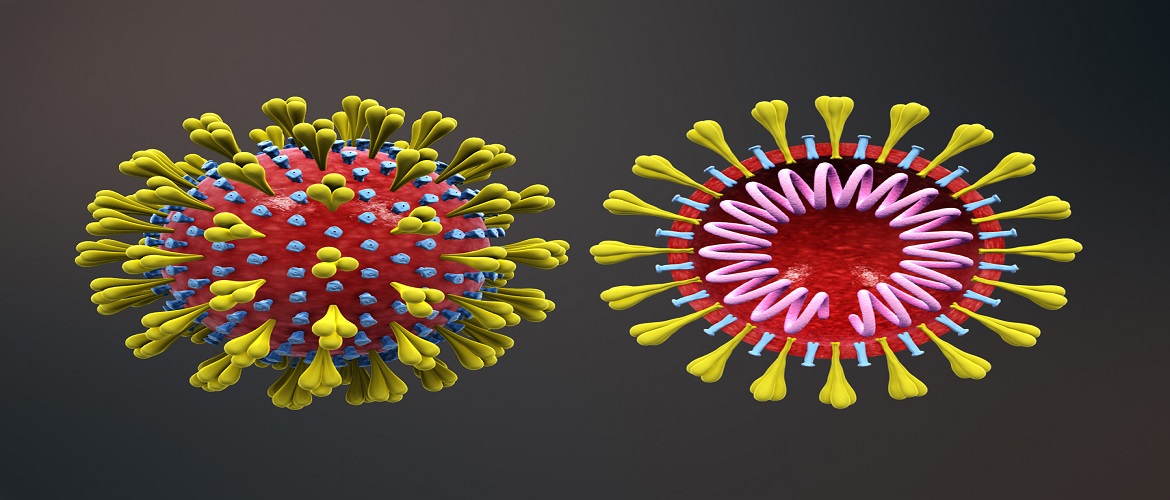Battling New Covid-19 Strains
February 17, 2021 | Expert Insights

New strains of COVID-19 in the UK, South Africa, and Brazil have brought on concerns about whether the vaccines would be effective against them. Due to both the newness of the vaccine and the relatively low number of vaccinees, it’s hard to know right now if the inoculation would work against the new variants. There could also be a chance that those who get immunised could still catch the new strain. Since the vaccines are of different types as well, such as some working on mRNA platforms and others on the weakened virus (as a whole), there will be different levels of immune response that people shall develop as well.
According to an article in the renowned journal Nature, the initial lab results are trickling in on the effectiveness of the vaccine and antibodies on the new strain. A preprint published on January 8 found that a mutation shared by the variants did not alter the effectiveness of the antibodies in the people who received the vaccine developed by Pfizer and BioNTech.
For the vaccines to address all strains, an inclusive, open architecture is preferred. Every generation of vaccine is defined by its safety profile, and such antigenic updates shall keep being done to the COVID vaccine as well, making it more refined each time. Perhaps in the future, the safest form of a vaccine could be one that is administered nasally and would be made more inclusive. For example, the swine flu vaccine has four strains of the swine flu virus (quadrivalent) in it. Babies are given a pentavalent vaccine of DPT, Hep B, and Hib. This could be the future of the COVID vaccine as well; it will eventually accommodate all the evolving changes with the various virus strains.
SPIKE PROTEIN MUTATIONS
Variations in RNA viruses are common, however, what is worrying about the two new strains is how much faster they spread compared to the original virus — the UK strain spread up to 50 per cent faster. The variant in the UK (known as VUI 202012/01) showcases 14 mutations and three deletions in its genetic material. The Genomics Consortium UK (CoG-UK), which flagged the new strain, also stated that a particular deletion (of variation HV 69/70) was also related to the mink-associated outbreak in Denmark. Particularly, the mutation at N501Y is concerning.
In South Africa, the variant is called 501Y.V2 and emerged independently of the other strain. Both have mutations on the spike protein, through which the virus identifies and infects host cells, and is also the main target of the immune response. This is the N501Y. A hypothesis that some studies have hinted at is that this N501Y change allows the virus to attach to cells more strongly, making infection easier.
Other mutations, however, might affect immunity — particularly the receptor-binding-domain mutation E484K found in the 501Y.V2 strain. In a January 4 preprint of a new strain research, the team from Fred Hutchinson Cancer Research Centre in Seattle reported that the E484K and several other mutations can escape recognition by antibodies in peoples’ convalescent sera in Brazil, which are called escape mutants.
INDIA AND THE NEW STRAIN
In India, due to many vaccines being accessible and manufactured here, people could have a diverse choice of vaccines to take. This, along with India’s experience of vaccinating a large population through previous schemes like polio eradication, makes it well-positioned in the vaccination drive for the long term.
Other vaccines other than the ones being circulated are also being developed. One such example is an international collaboration between the University of Wisconsin–Madison, and the vaccine companies FluGen and Bharat Biotech, called CoroFlu. Based on an influenza vaccine M2SR, it lacks a gene called M2 which restricts the virus only a single round of replication in cells.
Additionally, there is also the need for better and stronger drugs to be used in treating COVID. Dexamethasone, a corticosteroid, is a good option, and widely available in India, and per preliminary findings shared with the WHO, for patients on ventilators, the treatment was shown to reduce mortality by about one third. The ease of access to oral antiviral drugs is also another advantage for India and a reason for its lower death rate on average.
What is risky for India is the lack of information about infection control related to a large vaccination initiative. Since there could be varying standards of infection control at different centres, the transmission of blood-borne viruses like HCV and HIV can be a cause for concern.
LONG-TERM IMMUNITY
With new vaccines coming and some going away, there could be (in the distant future) an issue with our immune systems being too stimulated due to the different vaccines. There might even be a change of multiple vaccinations leading to a failure or hyperactivity of the immune system. COVID, being a short-term disease (since most recover within 2-3 weeks) could be easier to eradicate. As always, maintaining hygiene is the best way to avoid contracting the infection. Despite vaccination, preventive steps need to be followed.








Comments